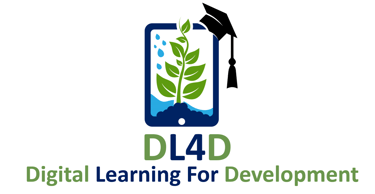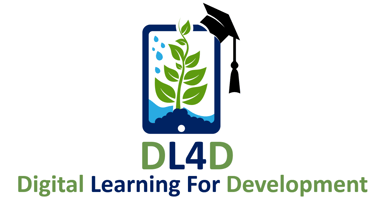Artificial Intelligence ( AI ) in Humanitarian and Development Sector
The way that development and humanitarian groups handle global issues is being drastically changed by artificial intelligence (AI). AI provides strong capabilities to increase effectiveness and impact, from anticipating natural disasters and streamlining relief efforts to expanding access to healthcare and education in underprivileged areas. AI-driven data analysis in humanitarian assistance enables organizations to more efficiently manage resources, identify individuals at risk, and provide aid more quickly during emergencies. By promoting sustainable agriculture, bolstering governance, and increasing financial inclusion, it advances long-term development objectives. Even while AI has a lot of potential, its application in these fields also presents moral questions about prejudice, data privacy, and fair access, thus responsible implementation is crucial for significant change.

Artificial Intelligence (AI) is the ability of a computer or machine to perform tasks that typically require human intelligence, like learning, reasoning, and making decisions. Growing funding, data accessibility, and processing power are driving the rapid emergence of AI applications across several industries.
In the past five years, the use of AI has doubled due to notable developments in methods supporting more general ( generative ) tasks, such as the production of original text, images, and videos, or "Generative AI" (e.g., ChatGPT).
AI has broad ramifications for the nature of humanitarian crises and response, ranging from the possibilities presented by technology that aid in catastrophe prediction or data collection for more efficient aid to the possible risks provided by emerging forms of conflict and armament.
Through increased intervention efficiency, efficacy, and scalability, artificial intelligence (AI) is revolutionizing the development and humanitarian sectors. From healthcare and refugee aid to disaster response and food security, artificial intelligence (AI) is improving decision-making, allocating resources optimally, and offering creative answers to some of the most difficult problems facing the globe.
AI/ML in the Humanitarian and Development sector
Aid groups and governments may better respond to crises, manage resources, and serve vulnerable populations by using machine learning (ML), which enables computers to learn from data, identify patterns, and make predictions.
Agriculture and Food Security
Crop Failure Prediction: AI forecasts agricultural yields and identifies possible food shortages by analyzing crop, weather, and soil data. For instance, the World Food Programme (WFP) and NASA employ AI to forecast famines in Africa.
Smart Irrigation: ML can minimize waste by optimizing water consumption based on real-time environmental data.
Predicting and Responding to Disasters
AI-Powered Early Warning Systems: Machine learning models use satellite imagery, seismic data, and meteorological patterns to forecast natural disasters like earthquakes, floods, and hurricanes. Google's Flood Forecasting, for instance Millions of people receive alerts when AI forecasts floods in South Asia.
Disaster Damage Assessment: AI can use drone and satellite photos to evaluate damage and rank the delivery of relief.
Protection of the Ecology and Climate Resilience
Deforestation and Wildlife Monitoring: Artificial intelligence uses satellite data to identify illicit poaching and logging.AI is used, for instance, by Global Forest Watch to monitor deforestation in the Amazon jungle.
Pollution Control: Governments can enact better environmental policies by using AI-powered sensors to identify pollution in the air and water.
Disaster Response and Forecasting
AI-Powered Early Warning Systems: To forecast natural disasters like hurricanes, floods, and earthquakes, machine learning algorithms examine meteorological patterns, seismic data, and satellite imagery. For instance, Google's Flood Prediction Millions are alerted when artificial
Generative AI in the Humanitarian and Development sector
In the humanitarian and development sector, generative AI refers to the use of AI technology to produce resources, solutions, or material that aid in initiatives in fields such as development programs, education, healthcare, and crisis management. It can produce new information, models, tactics, or even hypothetical situations to improve outreach, resource allocation, and decision-making.
Educational Content Generated by AI
AI produces personalized learning resources, including video courses, learning modules, quizzes, and textbooks, that are suited to the unique requirements of students in developing nations. Because of this, learning becomes more individualized and accessible, overcoming obstacles like a lack of resources or teachers. For instance, AI helps close the educational gap in rural communities in sub-Saharan Africa by producing multilingual, locally relevant instructional materials.
Virtual Instructors & Tutors
Particularly in places where there is a lack of certified professors, AI-powered virtual tutors give real-time assistance by conversing with students and providing answers to their inquiries. This improves accessibility and quality of education, especially in rural areas. For instance, by offering tailored teaching, AI-powered chatbots assist kids in refugee camps in learning new skills like language acquisition or STEM topics.
AI for Monitoring and Wildlife Protection
Generative AI enables proactive conservation efforts by producing synthetic photos and identifying poaching trends, which contributes to the development of more effective wildlife monitoring systems. Both illegal poaching and real-time monitoring of endangered animals are improved by this. For instance, to teach conservationists how to spot illicit logging and poaching in the Amazon jungle, AI creates synthetic data intelligence predicts flooding in South Asia.
Disaster Damage Assessment: AI evaluates drone and satellite photos to determine the extent of damage and to determine the best time to distribute relief.
Agentic AI in the Humanitarian and Development sector
The term "agentic AI" describes artificial intelligence systems that function independently, make choices, and act to accomplish predetermined objectives without continual human assistance. Agentic AI has the potential to improve crisis response, resource distribution, and the delivery of life-saving services in the humanitarian and development sector—even in high-risk or remote locations.
AI Chatbots for Social and Legal Assistance
AI-driven chatbots help refugees by offering multilingual legal advice, housing details, and medical services. This makes it easier to obtain important information without requiring legal professionals or human translators. For instance, the European "Refugee.Chat" bot assists asylum applicants in navigating the immigration system.
AI-Powered Robotic Health Assistants & Mobile Clinics
AI-powered mobile health units lessen the need for human physicians by diagnosing and treating illnesses on their own in remote locations. This expedites diagnosis and increases access to healthcare in situations with limited resources. For instance, in Rwandan rural areas, AI-powered kiosks offer round-the-clock medical advice and medication dispensing.
AI-Powered Identity Verification & Refugee Registration
AI prevents identity fraud by securely registering and verifying refugees using biometrics and facial recognition. It ensures equitable distribution of help and expedites the application procedure for asylum. For instance, the World Food Programme (WFP) safely distributes food aid in Jordan's refugee camps by using iris scanning AI.
Contact us
Whether you have a request, a query, or want to work with us, use the form below to get in touch with our team.




